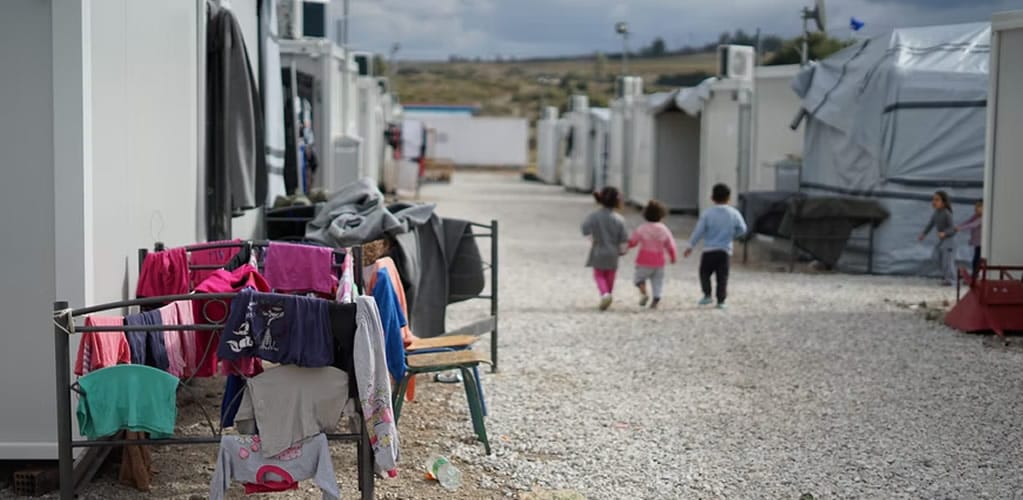Mapping the world’s refugee population.
According to a report by the UNHCR, the number of people fleeing war, persecution and conflict exceeded 89 million by the end of 2021. This number is up 8% from the year before and in 2022 to date already surpassed 100 million.

According to a report by the UNHCR, the number of people fleeing war, persecution and conflict exceeded 89 million by the end of 2021. This number is up 8% from the year before and in 2022 to date already surpassed 100 million.
First published: June 2022.
More than two-thirds of all refugees and displaced people originated from just five countries in late 2021, while the top 10 countries of origin accounted for more than 80% of the global total. As our chart shows, Syria has the highest number of displaced people outside of their home country, at 6.8 million. Venezuelans are the second largest population displaced across borders, with 4.6 million living outside of the country, nearly all of whom are located in the Americas region. The latest count of displaced Afghans totalled 2.7 million people, the third-highest in the world. Meanwhile, violence, food shortages, and deteriorating conditions have been pushing South Sudanese to emigrate, their numbers rising from 2.2 million refugees in 2020 to 2.4 million at the end of 2021, almost all of whom are living in Uganda (958,900), Sudan (803,600), Ethiopia (386, 800) and Kenya (135,300), according to the UNHCR.
In addition to a rise in the number of people being forced to flee their homes, these figures increased due to the registration of new births, new estimations of displacements, as well as updates following the backlog from 2020, as registration resumed in 2021 after being suspended due to Covid-19. Since the report reflects on the period January 2021 to December 2021, this chart does not yet reflect more recent events. In 2022, Ukraine will become one of the countries with the most refugees, with 5.1 million already having left the country as of mid-June.


The latest official UNHCR figures from 2020 had revealed a continuing upward trend. At the end of that year, there were 82.4 million refugees, asylum-seekers and internally displaced people. As our infographic shows (RIGHT), that figure is in sharp contrast to the 42.7 million people recorded in 2012, and even as recently as the 59.2 million in 2014.
The 2020 increase happened despite the coronavirus pandemic leading to border closures and movement restrictions. As cited in the 2020 UNHCR report, the United Nations had even expected 1.5 million more refugees around the world in 2020 had it not been for COVID-19.
Without free, impartial, and fact-based media, information and democracy will always be controlled by governments and those who control the media. Support PMP Today!
CHIP IN or DONATE REGULARLYThe Most Dangerous Migration Routes
According to official data by Mexico’s Comisión Nacional de Búsqueda overseen by the Interior Ministry, the number of currently disappeared people in the country surpassed 100,000 in the latest update. Combined with figures from a report by the Jesuits’ Missing Migrant Search Program that suggests a minimum of 349 foreigners disappeared in Mexico in 2021 alone, most likely due to drug cartel activity, the picture becomes even grimmer. Although these numbers are staggering, the migration route from Central America to the U.S. is far from the most dangerous when viewed from a global perspective.
As our chart based on the International Organization for Migration (IOM) analysis shows, at least 24,023 people were killed between 2014 and May 15, 2022 while trying to cross the Mediterranean. This large number can be attributed to widespread migration movements in 2015 and 2016. Those two years alone were responsible for 38% of total migrant deaths on this route between 2014 and 2022. The number of deaths occurring while crossing the Sahara Desert, which accumulated to 5,323 in the past eight years, is tangentially related to these movements as well. Deaths connected to border crossings between the U.S. and Mexico amounted to 3,761 between 2014 and 2022.
These numbers, however, are not reflective of the total and rather show the minimum estimate aggregated from cases reported by connected governments, media outlets and NGOs as well as surveys of migrants and, in some regions, field missions by the IOM itself.

The IOM’s methodological scope encompasses “the deaths of migrants who die in transportation accidents, shipwrecks, violent attacks, or due to medical complications during their journeys. It also includes the number of corpses found at border crossings that are categorized as the bodies of migrants, on the basis of belongings and/or the characteristics of the death.” Deaths in detention, refugee camps or housing, after deportation and of internally displaced people are excluded.

— AUTHOR —
▫ Anna Fleck, Martin Armstrong, Florian Zandt, Data journalists at Statista.
Sources
- Text: This piece was first published in Statista, Statista & Statista published in PMP Magazine on 21 June 2022.
- Cover: Unsplash/Julie Ricard. (Licensed under a Creative Commons Attribution-ShareAlike 4.0 International License.)






[Read our Comments Guidelines]